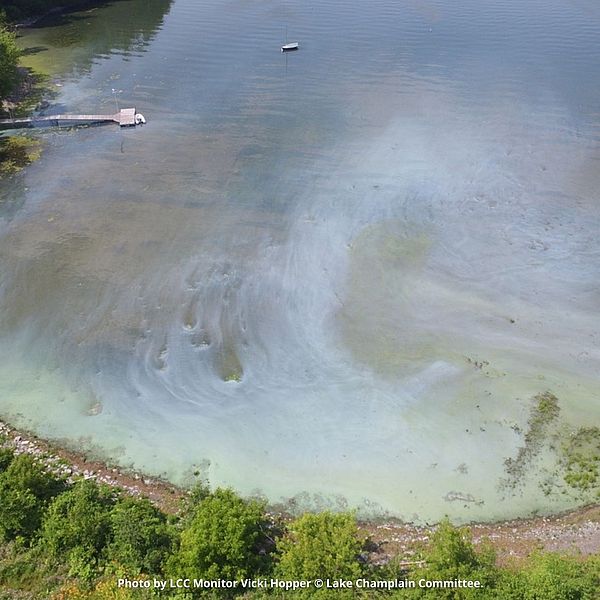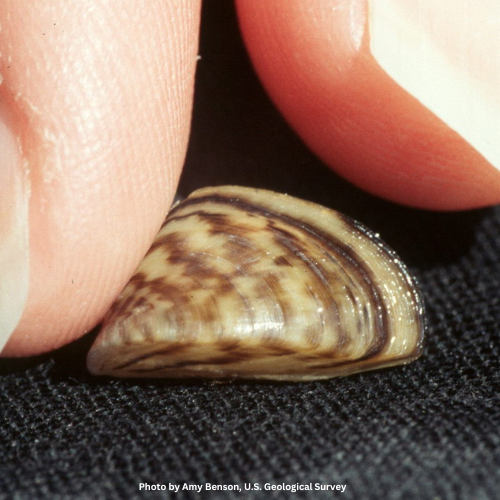Photo by Tom Rogers, © Lake Champlain Committee

Cyanobacteria
Cyanobacteria blooms are a significant issue in Lake Champlain and can pose health risks to people and pets. Blooms can vary widely in appearance, making awareness and monitoring especially important. Learn how to recognize blooms and consider joining our cyanobacteria monitoring program.

Aquatic Invasive Species
Invasive species pose a major threat to the lake's ecological health and recreational access. Through LCC's Champlain Aquatic invasive Monitoring Program (CHAMP), we train and support volunteers to survey and report on invasive species in the lake.

Volunteer
Volunteers are the heart and soul of the Lake Champlain Committee. Our community science monitoring programs, the Lake Champlain Paddlers' Trail, and education and outreach work would not be possible without the help of dedicated folks that share a love for Lake Champlain and a passion to protect it.
LCC is a bi-state nonprofit that uses science-based advocacy, education, and collaborative action to protect and restore water quality, safeguard natural habitats, foster stewardship, and ensure recreational access.

E-news
LCC's quarterly e-newsletter gives you access to news and updates on Lake Champlain and our work for a healthy lake. Our October 2025 issue includes notes on low lake levels, information on our new benthic cyanobacteria project, and more.
News

Where Do We Stand with Phosphorus Reductions for Lake Champlain? - January 2026 Lake Look
Posted 1/2/26
Lake Champlain’s health is tremendously affected by terrestrial activities. Some of the most important impacts come from Montpelier – and not only when the Winooski River reaches flood stage.

Don’t Move a Mussel: The Growing Threat of Invasives, from Zebra to Quagga - December 2025 Lake Look
Posted 12/4/25
Invasive zebra mussels are found throughout Lake Champlain, from the southern reaches of the lake to the northern bays in Quebec, growing in dense clusters and harming the lake's ecosystem, recreational access, and economic viability. And if zebra…

Lake Champlain Water Quality Panel - summary and recording
Posted 11/14/25
LCC's Executive Director Jenny Patterson joined a panel of experts hosted by Adirondack Explorer in early November 2025 about Lake Champlain's water quality and the high cost of inaction when dealing with phosphorus pollution. Check out this article…